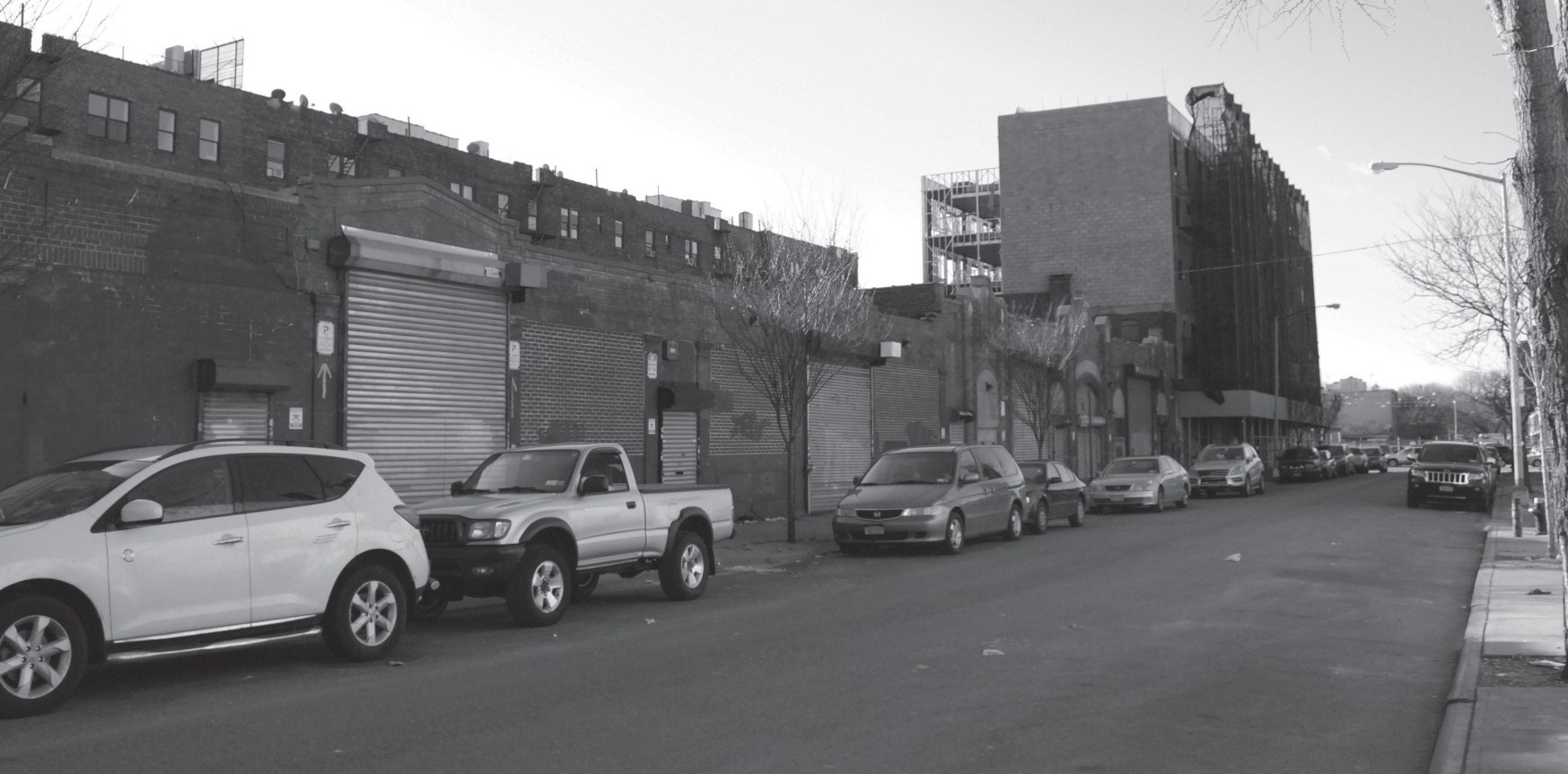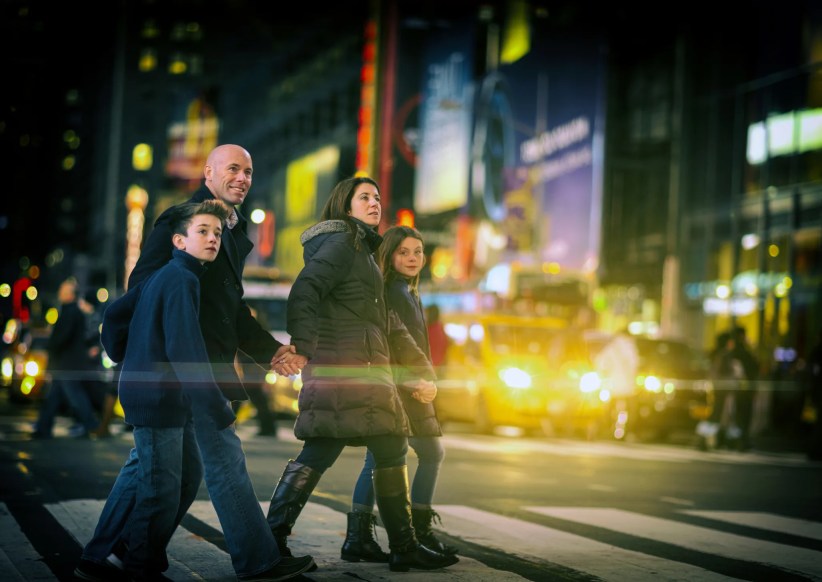Traffic Concerns Voiced At LIC Town Hall
Western Queens residents spoke out on the Vision Zero initiative and provided feedback on traffic safety in the city during a town hall event last Wednesday, Apr. 23, at LaGuardia Community College in Long Island City.

Residents packed the college’s Little Theatre for the opportunity to engage elected officials and NYPD Transportation Bureau Chief Thomas Chan on the city’s effort to end traffic deaths. Brief statements from Chan and several Queens City Council members were followed by individual comments and ideas from the crowd to formulate recommendations based on their experiences.
“Tonight we are bringing the government to the people so we can cut down of these traffic fatalities with education and enforcement and implement the Mayor’s initiative,” City Council Member Peter Koo said.
Mayor de Blasio has made eliminating traffic fatalities by the year 2024 the prime goal of the Vision Zero campaign. Town hall events and workshops are the political leaders method of reaching out to city residents in the effort to increase pedestrian safety.
This week the council held a press conference at City Hall to mark the efforts progress, and later convened an oversight hearing of the NYC Council Transportation Committee on a package of legislation aimed at achieving Vision Zero’s goals.
At the event last Wednesday, the crowd heard from Chan, commanding officer of NYPD transportation, City CouncilMajority Leader Jimmy Van Bramer and his council colleagues Danny Dromm, Donovan Richards, Costas Constantinedes, Koo and Ydanis Rodriguez.
Juan Martinez, general counsel and legislative director for Transportation Alternatives also spoke briefly on the need to make pedestrian safety a priority.
LaGuardia Community College President Gail Mellow brought the purpose of the forum into focus by recalling the tragic death of Tenzin Drudak, a 16-year-old killed outside LaGuardia on Thomson Avenue when he was struck by an out-ofcontrol minivan inMarch of last year.
Following his death, the college commissioned a traffic study on the busy avenue that made three recommendations to improve safety, some of the same measures called for in a 2011 report from Transportation Alternatives and The Drum Institute for Public Policy.
In his comments Martinez echoed the findings of the 2011 study which found speeding to be the cause of most fatal crashes in the city.
Martinez believes the work is necessary because one in three New Yorkers was injured or knew someone injured in a car accident, he said.
“This is a problem we can solve,” Martinez said. “Vision Zero, it’s a huge undertaking.”
The town hall meeting was organized by Rodriguez, chair of the City Council Transportation Committee. Each speaker on the panel either referenced Drudak’s untimely death, or related a different tragic story involving a traffic fatality, but the event was meant to focus on hearing from Queens residents on where they feel safe, or unsafe on the city’s streets.
Steven Levine, coordinator for educational programs at LaGuardia, spoke during the public comment section, and asked for more speedlimit signs, a speedometer sign and speed cameras on Thomson Avenue outside the college.
One effort has already debuted, as arterial slow zones of 25 miles per hour have been set up on many dangerous roads as a first step in the process, with other safety efforts to follow.
Slow zones have been installed on Atlantic Avenue and McGuinness Boulevard in Brooklyn and Polly Trottenberg, the Department of Transportaion (DOT) commissioner wants to deploy more on Northern Boulevard, Astoria Boulevard and Woodhaven Boulevard.
Peter Beal, a Rego Park resident, mentioned Queens Boulevard mentioned as a particularly dangerous road where a slow zone should is needed.
He expressed concern for the safety of his “12-year-old son (who) has to cross Queens Boulevard two times a day” to get to and from school, he said.
“We are losing way too many people on this street,” he added. Beal also commented he would like what some have called “The Boulevard of Death” redesigned completely with pedestrian safety prioritized.
In his comments, Chan spoke on law enforcement’s efforts to implement the initiative. He also briefly mentioned traffic enforcement priorities police on the street will be tasked with enforcing.
“The Police Department has been working on traffic issues for many years,” Chan said. Officers are focused in speeding, failure to yield to pedestrians and light violations.”
“Traffic stat meetings have executive officers of precincts meet once a week but ultimately it’s a collective and cooperative effort,” he added.
Rodriguez is behind the effort because “Vision Zero is the right thing to do,” he said.
He added he wants to put an end to the pain of parents losing kids to such catastrophe, and said “it’s a crisis but I’m personally committed to reducing the deaths on city streets to zero.”
He also said two more town hall events are scheduled–in Staten Island and The Bronx–giving each borough at least one forum to provide feedback and hear from officials. Rodriguez said pedestrian safety workshops are also planned, with two scheduled for Queens later this month.
Van Bramer provided some thoughts on Vision Zero at the event, and reiterated he believes it is imperative work for the council because “this is an issue that affects everybody,” he said.
Dromm spoke about some measures he has taken since he first entered office that were based on a Jackson Heights traffic safety study. He believes the city needs to change its priorities to protect pedestrians by making conditions for tragedy less prevalent.
In this effort, his district secured two public plazas that help protect pedestrians, he added.
One of the spaces, Diversity Plaza, at the confluence of Broadway, Roosevelt Avenue and 74th Street “was placed at the most dangerous intersection in Jackson Heights,” he said.
“It is my continued goal to prevent these tragedies from ever happening again,” Dromm said.
Richards told a tragic tale of trying to comfort a mother who’s son was struck and killed by a car in his district.
“What do you say to the mother,?” Richards asked. “There’s no reason to wait for something to happen.”
He then added, “This is critical. Traffic safety needs to be a priority in the city.”
Helen Ho, representing the Mayor’s office at the event, brought the issue to the people.
“It’s key that we listen to you. We know that we can prevent these tragedies. This is our mindset,” she said.
She also commented that the mayor wants the authority to set the city’s own speed limit, install more red light cameras and deploy speedometer signs throughout the five boroughs, measures which currently are controlled by Albany.
She described the Mayor’s office as looking “to target the most dangerous behaviors,” and wants the public to “help us identify the most dangerous roads.”
Eugene Falik, of Rockaway, spoke in the public comment portion and criticized DOT officials. .
“The city DOT is the biggest problem,” he said. “There are not enough speed limit signs, too many bad roads with cracked, bad pavement and they place bike lanes whereever.”
Marin Brown from Jackson Heights was concerned about traffic along 34th Avenue and with a new school coming wants more traffic reduction through law enforcement.
“It’s a speedway and needs addressing,” he said.
Businesss interests were also represented as Ibrahim, a pedi-cab driver told the panel that he is afraid when working because of taxis driving aggressively and recklessly, and wants to see cyclists protected by Vision Zero, a suggestion Van Bramer, an active cyclist also championed earlier.

































